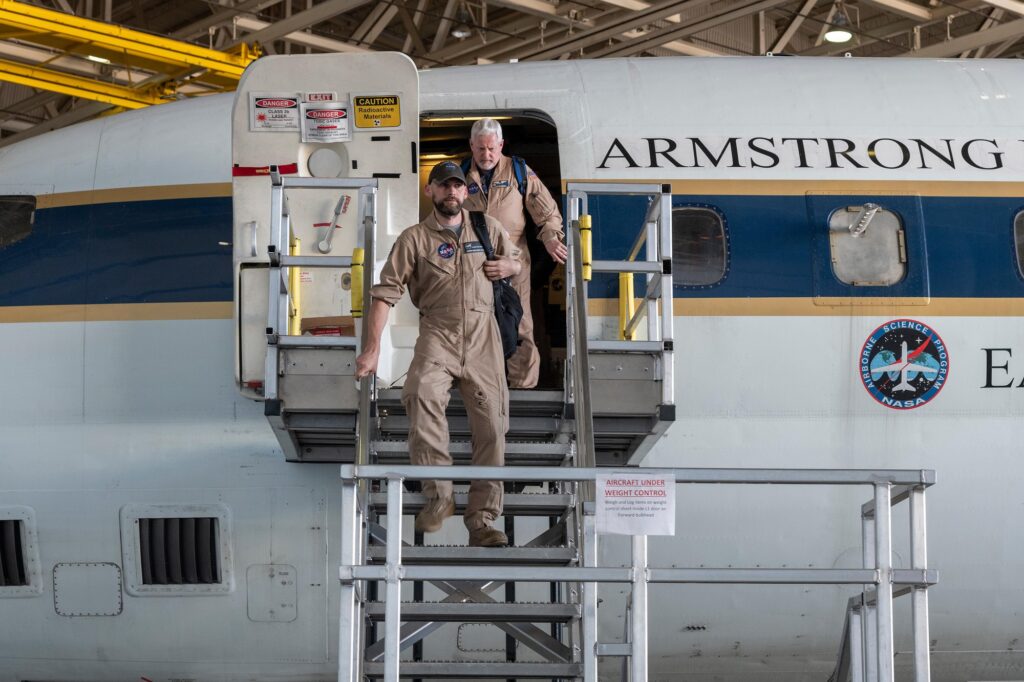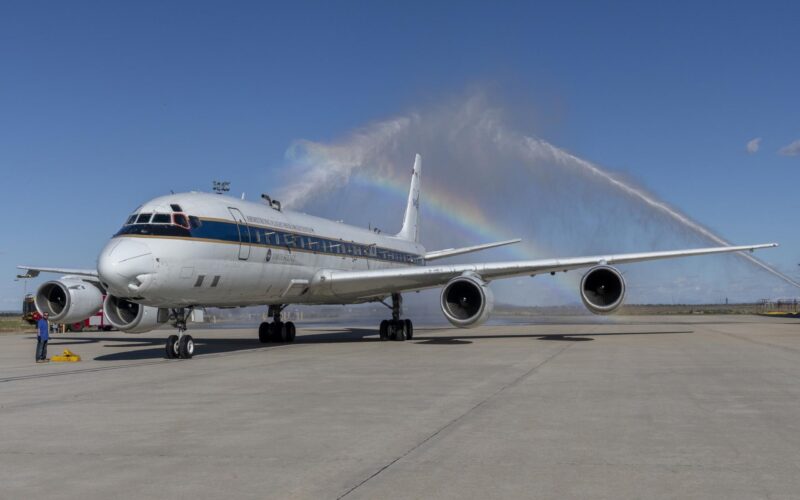NASA’s DC-8-72 aircraft has completed its last mission for the US space agency after carrying out 37 years of groundbreaking scientific research.
The four-engine powerhouse, famous for being the largest flying science laboratory in the world, joined NASA in 1987 as the core aircraft for the agency’s airborne science missions.
However, on April 1, 2024, the intrepid narrowbody plane, registered N817NA, completed its final mission and returned to the agency’s Armstrong Flight Research Center Building 703 in Palmdale, California.

A water salute by the US Air Force Plant 42 Fire Department greeted the DC-8 and crew home after the aircraft spent 2024 collecting detailed atmospheric data over several locations across Asia.
As well as supporting scientists, researchers, and students from NASA, throughout its career DC-8 also played an important part in research for federal, state, academic, and foreign institutions.
NASA’s DC-8 was built in 1969 and stretches 157 feet long with a 148-foot wingspan. The aircraft has a range of 5,400 nautical miles and can fly at altitudes from 1,000 to 42,000 feet for up to 12 hours.
NASA DC-8-72 N817NA
— Yunhyeok Choi (@icnman1025) April 5, 2024
@ OSN pic.twitter.com/vkp7O7ndO2
The jet has been highly modified to support the Agency’s Airborne Science mission and incorporates a suite of sensors and data systems that can be tailored to specific missions or instruments.
The aircraft will officially retire in May 2024 after concluding operations and then move to its new home at Idaho State University in Pocatello, Idaho, where it will be used to train future aircraft technicians by providing real-world experience in the college’s Aircraft Maintenance Technology Program.

